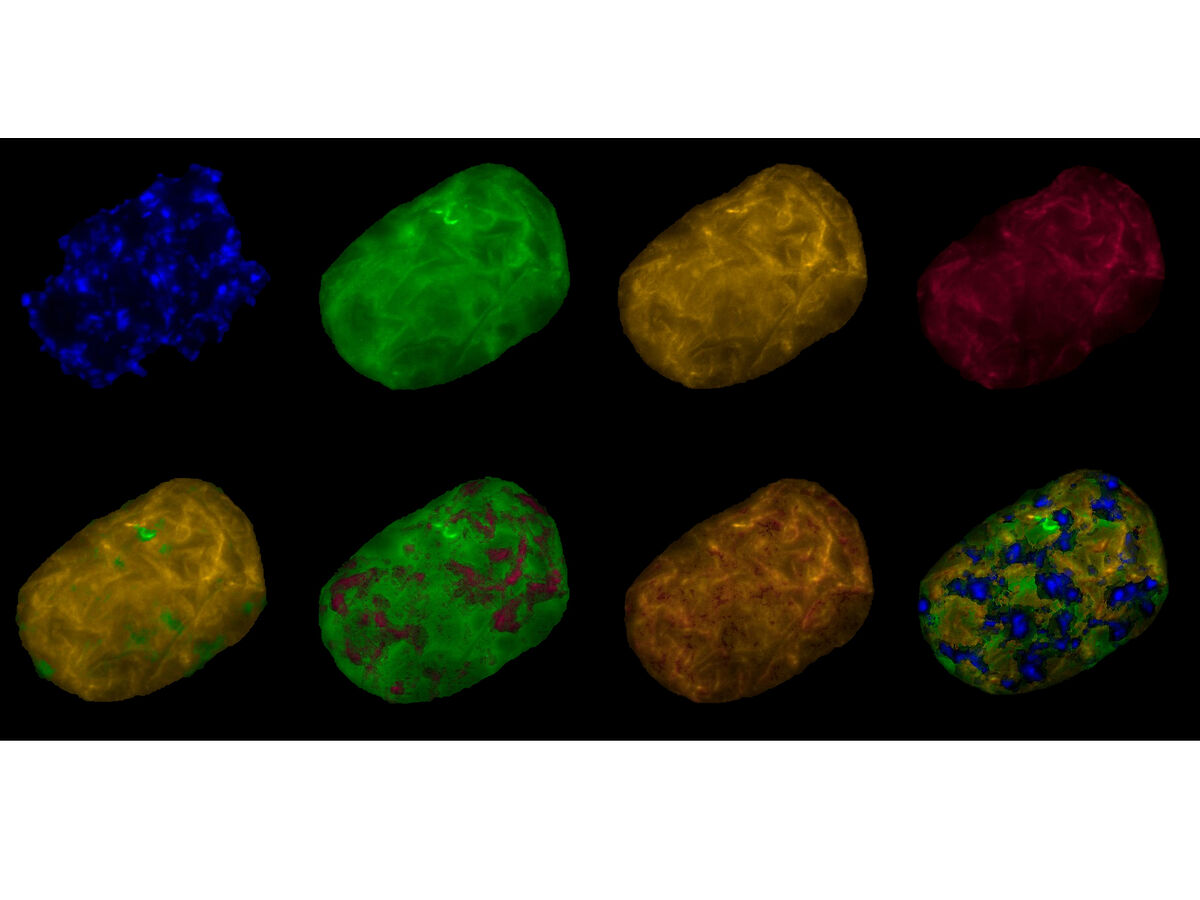Achromatium oxaliferum is the largest (known) freshwater bacterium in the world. It is 30,000 times larger than its “normal” counterparts that live in water and owing to its calcite deposits it is visible to the naked eye. It is known – at least among bacteria fans – that some sulphur bacteria such as Achromatium can be extremely large and may contain several genome copies. But the fact that a single bacterial cell harbours hundreds of different(!) genomes is new – also to bacteria aficionados.
Although Achromatium oxaliferum has been known for over a century, its physiology and genetic features remain largely unknown. A team of researchers from the Leibniz-Institute of Freshwater Ecology and Inland Fisheries (IGB) in Berlin, the Carl von Ossietzky University in Oldenburg and the University of Oxford found that single cells of Achromatium contain up to 300 DNA spots, each with an undefined number of chromosomes. Single-cell genomes and metagenomic analysis showed that the many chromosomes are not identical copies of one another.
A new dawn for bacteria researchers
Usually environmental samples – such as water or soil samples – are analysed using DNA/RNA sequences. In this process, the different sequences shed light on the types of bacteria contained in a sample. If it is assumed that a polyploid bacterium of a certain type has multiple identical genomes, then the number of different types of bacteria in a water sample will be that of the different genomes. If, however, the sample also contains Achromatium or similar polyploid bacteria, the method used to date may lead to an overestimation of the true diversity. Where 1000 different bacterial types were once assumed, perhaps there are only 100 or less.
Only a few years ago, it was still believed that single-celled organisms with several genome copies were the exception. In the meantime, however, such organisms are increasingly being “discovered”. The new insights into Achromatium oxaliferum could, therefore, also give an impetus to taking a closer look at cells with few to hundreds genome copies to ascertain whether they are in fact identical copies.
Same same but different
When an Achromatium cell divides, the genomes are likely distributed “randomly” to the daughter cells. This random division should actually cause the new cells to become increasingly dissimilar. And yet how does Achromatium manage to remain the same nonetheless? Strong environmental pressure leads to the preservation of functionality, ensuring the “survival” of Achromatium: mother cells and daughter cells remain the same organisms. Have a look at the scientist’s blog article on Nature Microbiology to deepen the topic
Study:
Danny Ionescu, Mina Bizic-Ionescu, Nicola De Maio, Heribert Cypionka, Hans-Peter Grossart (2017): Community-like genome in single cells of the sulfur bacterium Achromatium oxaliferum, Nature Communications 8, Article number: 455 (2017), doi:10.1038/s41467-017-00342-9. Read the study on Nature Communications
Contact
| Hans-Peter Grossart Experimentelle Limnologie hgrossartigb-berlin.de |


